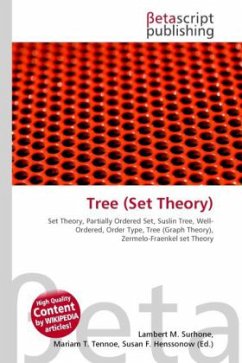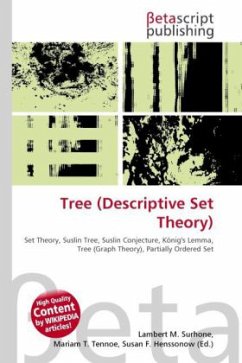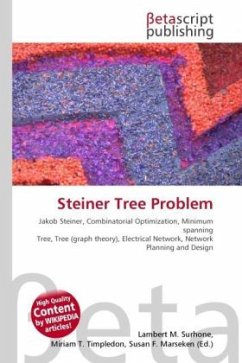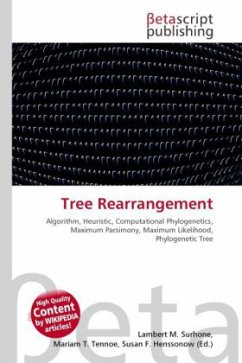
Spanning Tree
Versandkostenfrei!
Versandfertig in 6-10 Tagen
23,99 €
inkl. MwSt.

PAYBACK Punkte
12 °P sammeln!
High Quality Content by WIKIPEDIA articles! In the mathematical field of graph theory, a spanning tree T of a connected, undirected graph G is a tree composed of all the vertices and some (or perhaps all) of the edges of G. Informally, a spanning tree of G is a selection of edges of G that form a tree spanning every vertex. That is, every vertex lies in the tree, but no cycles (or loops) are formed. On the other hand, every bridge of G must belong to T. A spanning tree of a connected graph G can also be defined as a maximal set of edges of G that contains no cycle, or as a minimal set of edges...
High Quality Content by WIKIPEDIA articles! In the mathematical field of graph theory, a spanning tree T of a connected, undirected graph G is a tree composed of all the vertices and some (or perhaps all) of the edges of G. Informally, a spanning tree of G is a selection of edges of G that form a tree spanning every vertex. That is, every vertex lies in the tree, but no cycles (or loops) are formed. On the other hand, every bridge of G must belong to T. A spanning tree of a connected graph G can also be defined as a maximal set of edges of G that contains no cycle, or as a minimal set of edges that connect all vertices. In certain fields of graph theory it is often useful to find a minimum spanning tree of a weighted graph.Adding just one edge to a spanning tree will create a cycle; such a cycle is called a fundamental cycle. There is a distinct fundamental cycle for each edge; thus, there is a one-to-one correspondence between fundamental cycles and edges not in the spanning tree












